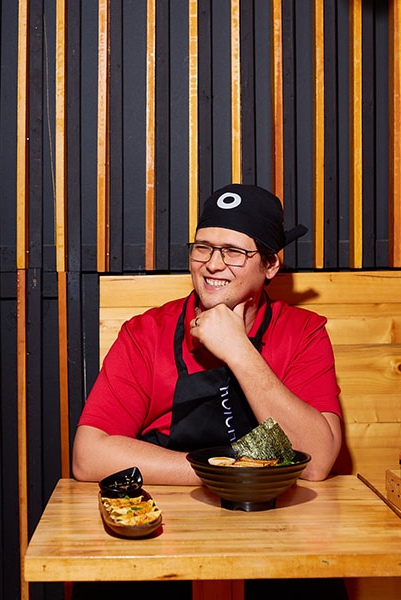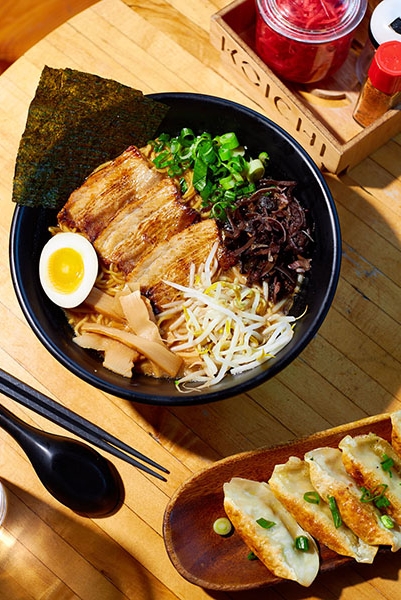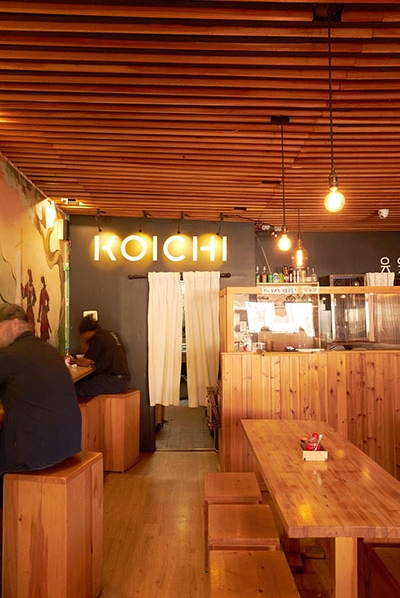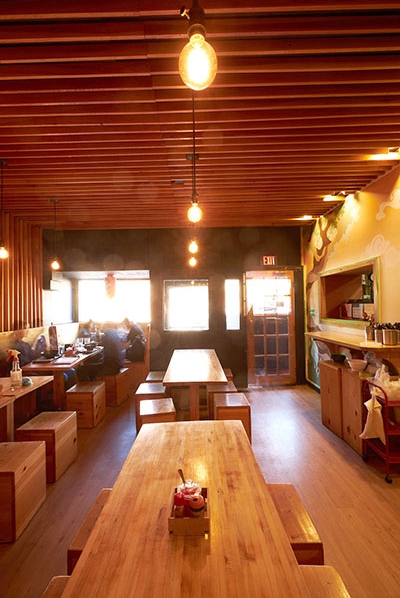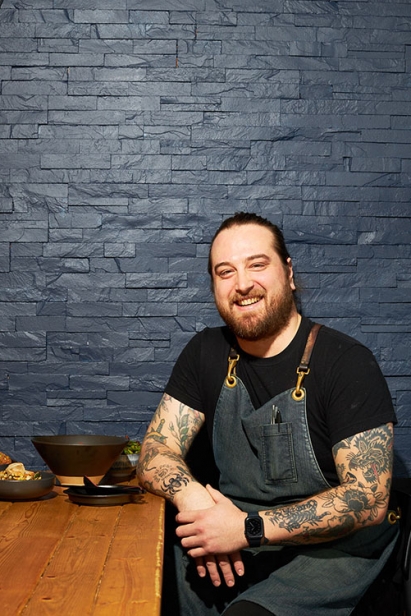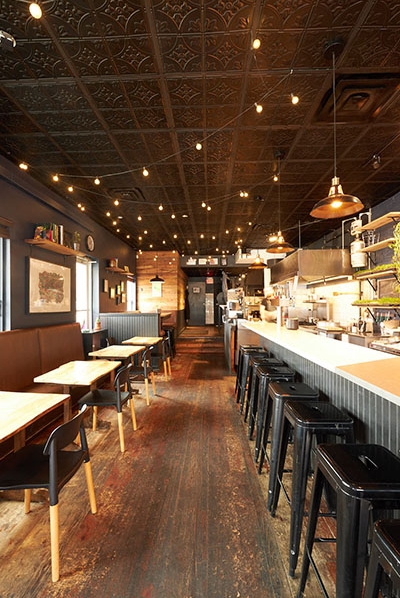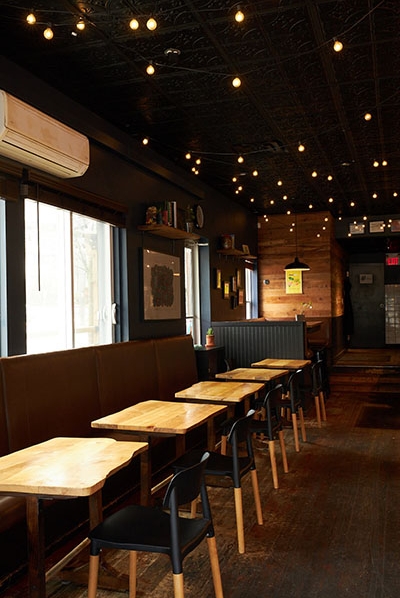A Tale of Two Broths
Soup, it seems, is a near-universal food, something that appears in one way or another in every culture imaginable, and the best ones have at their base a broth that has been laboured over by a chef who wouldn’t have it any other way. It’s hard to imagine a more umami-rich base than that of ramen so we spoke to two masters to find out their secrets to the best broth.
Koichi Ramen
Staying true to Japanese flavours
Koichi Paxton knows a thing or two about bringing authentic flavours back to Ottawa. His name — and vision — are behind Koichi Ramen on Somerset Street. Paxton’s mother is Japanese, and he recalls tasting ramen for the first time while visiting Japan as a young boy.
“After that first time, I kind of fell in love with ramen,” says Paxton, 40. “And then all the subsequent times, I always asked, ‘Hey Mom, can we go get ramen?’ whenever we were in Japan, and that love of ramen stuck with me.”
As he grew older, Paxton observed the boom of pho, or Vietnamese noodle soups, in Ottawa. While he appreciated the dish, he always felt something was missing. “I always felt like, ‘How come there’s no ramen here?’” he says.
After spending some time abroad, Paxton returned to Ottawa and completed an entrepreneurship course at Algonquin College. With a growing vision for his future business, he tried his hand at making ramen for the first time.
“I had a good friend who was Japanese; he was living in Ottawa at the time,” Paxton says. “He indulged me and let me practise making broths with him, and I can tell you, they were not very good.”
Paxton laughs as he thinks back to those early days, yet they set the foundation for his future business. Soon afterwards, when he was back in Japan, a friend connected him with the opportunity to apprentice at a ramen restaurant in a small city on Kyushu, the southernmost main island of Japan. Paxton also took a noodlemaking course, which led to him meeting a second restaurant owner who also invited him to apprentice. Between apprenticing at the two restaurants, Paxton was able to learn “a whole plethora” of styles of ramen.
“I was able to pick and choose from the two of them, and come up with the menu that we are currently serving,” he says, adding that the restaurant’s menu includes pork broth, chicken broth and vegetable broth dishes. “We have a Shoyu ramen, we have a Shio ramen; these are both very typical, traditional ramen. I’ve tried to make both of those very authentic.”
While Shoyu — a clear, dark brown chicken broth — is the most traditional ramen broth, Paxton says pork broth has overtaken chicken broth in terms of popularity. “
At this point, it’s international, it’s all across Japan,” says Paxton of pork broth, which emerged from the region of Japan where he was training. “It’s probably the favourite, but I would not say it’s the most traditional; it kind of took over everything else because the flavour is so deep.”
Achieving that intense flavour is a process that can’t be rushed. “We start first thing in the morning when we open, and usually it’s finished right before closing; so basically, we’re cooking all day,” Paxton explains. “One of the keys is if you have the time and the energy, just cook pork bones for longer than you think is right. I would say you could go easily 12 hours before worrying about any major changes to the flavour.”
Paxton says that while the restaurant has experimented a bit with a couple of broths – such as the Koichi Signature pork broth – it’s mainly tried to stay true to the flavours and experience one gets in Japan.
“We’ve had people from Japan, or people who have lived in Japan, say, ‘Wow, that’s what it tasted like when I was there,’” he says.
Koichi Ramen
832 Somerset St., W., Ottawa
koichiramen.com | 613.680.8822 | @koichiramen
Paper Tiger Noodle Bar
Showcasing Ottawa-area proteins
Over at the Paper Tiger Noodle Bar on Bank Street, chef and owner Charley Nelson takes a different approach to the menu — and it’s all purely his own.
“I’ve always loved ramen, but I just knew I didn't want to do it the same way as everybody else,” explains Nelson, 32. “This is not Japanese; we’re taking the concept and doing our own thing.
“I mean, I'm a white guy from Toronto. I've never been to Japan.”
The restaurant is known for its popular “beast ramen,” which features a broth in a state of perpetual change; it’s continually topped up with fresh bones, making it as old as the restaurant itself. For years, Nelson studied Chinese cooking and was fascinated with the concept of “century broths” — where there's one pot on a stove that's simmering for generations.
“That was super interesting to me, and I thought applying that to a ramen broth could be really interesting,” he says. When the restaurant opened in early 2021, Nelson tried it out for himself.
“For the first six months, we actually did have a pot on 24 hours a day, seven days a week; I would have to come in on my days off and just make sure it was doing okay.”
Over time, Nelson realized the method was not yielding the results he wanted.
“I learned pretty quickly that what happens is fat can very easily over-caramelize and with ramen broth, you almost want it fresh; you want that fat to be emulsified, almost daily. So what I found was it was almost getting an over-caramelized bitterness after a certain while.”
This led Nelson to adapt his approach. He began to take the broth pot off the stove every night, and cooled it down as fast as he could.
“Now when we start a new stock, I take all of the stock that we have leftover and I use that to start the next batch,” he says. “So it's not as not as intense as it sounds, but it's still using the same product that has at least a percentage of the very first day.”
Since the Beast broth takes the bones of every meat in the kitchen, the flavour experience is always changing.
“It kind of flows with the seasons a bit,” Nelson says. “In summer, we focus more on chicken — so the broth is very bright and chicken-forward — whereas in the fall we get more pork and more beef, so it ends up getting a bit richer, a bit deeper.”
For Nelson, sourcing the restaurant’s meat from quality, Ottawa-area farms is crucial.
“We want to showcase where we get our protein and really amplify that,” he explains. Paper Tiger buys pork from Mariposa Farm in Plantagenet, Ont., known for its hormone- and chemical-free products. Pasture-raised chicken comes from Ferme Rêveuse, a family farm in Curran, Ont., that specializes in regenerative farming practices.
“The quality of the chickens really shows when we cook their carcasses down,” Nelson says.
For customers seeking a meat-free dish, Paper Tiger offers a vegan ramen that Nelson believes rivals the carnivorous option.
“It’s one of my favourites; it’s just so wonderful and surprising,” he says. “I wanted to make something that even meat eaters would be like, ‘I might want the vegan option.’
“We make it almost every day; it’s very, very fresh. We take garlic and onions and mushrooms to the point of almost being burnt, so you get these wonderful, vibrant, rich, deep flavours.”
In addition to ramen, Paper Tiger’s menu features a surprisingly eclectic mix of seafood, small plates (the creamy fried Brussels sprouts are noteworthy), craft cocktails and sake. Th e message — embedded in the Chinese proverb behind the restaurant’s name — is a reminder not to judge a book by its cover.
“If you take a look at the menu right now, there’s French influence, there’s Mexican influence,” Nelson says. “We just make food that we want to eat, and ramen was just a big part of that.”
Paper Tiger
1091 Bank St., Ottawa
papertiger.ca | 613.521.2125 | @papertigerottawa


